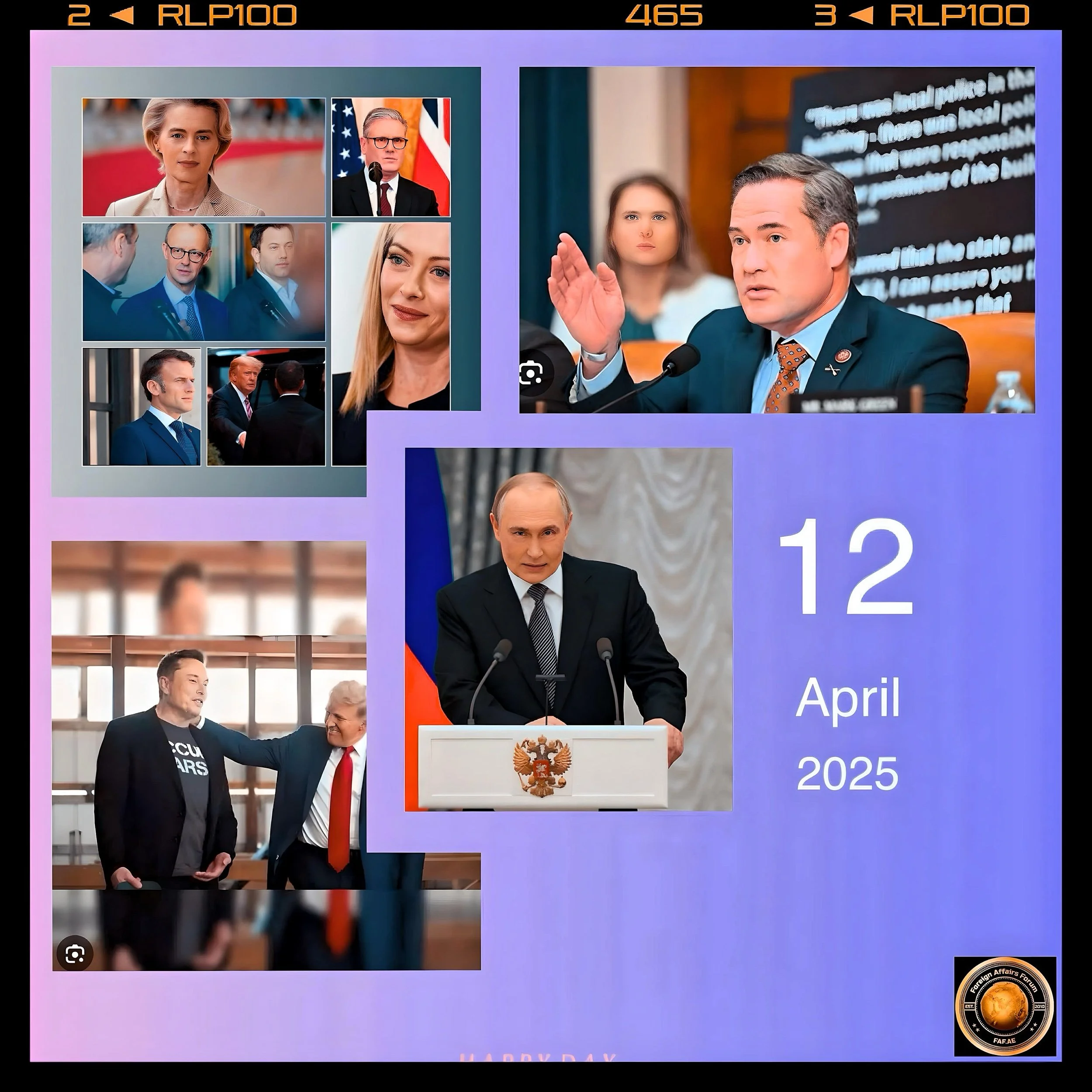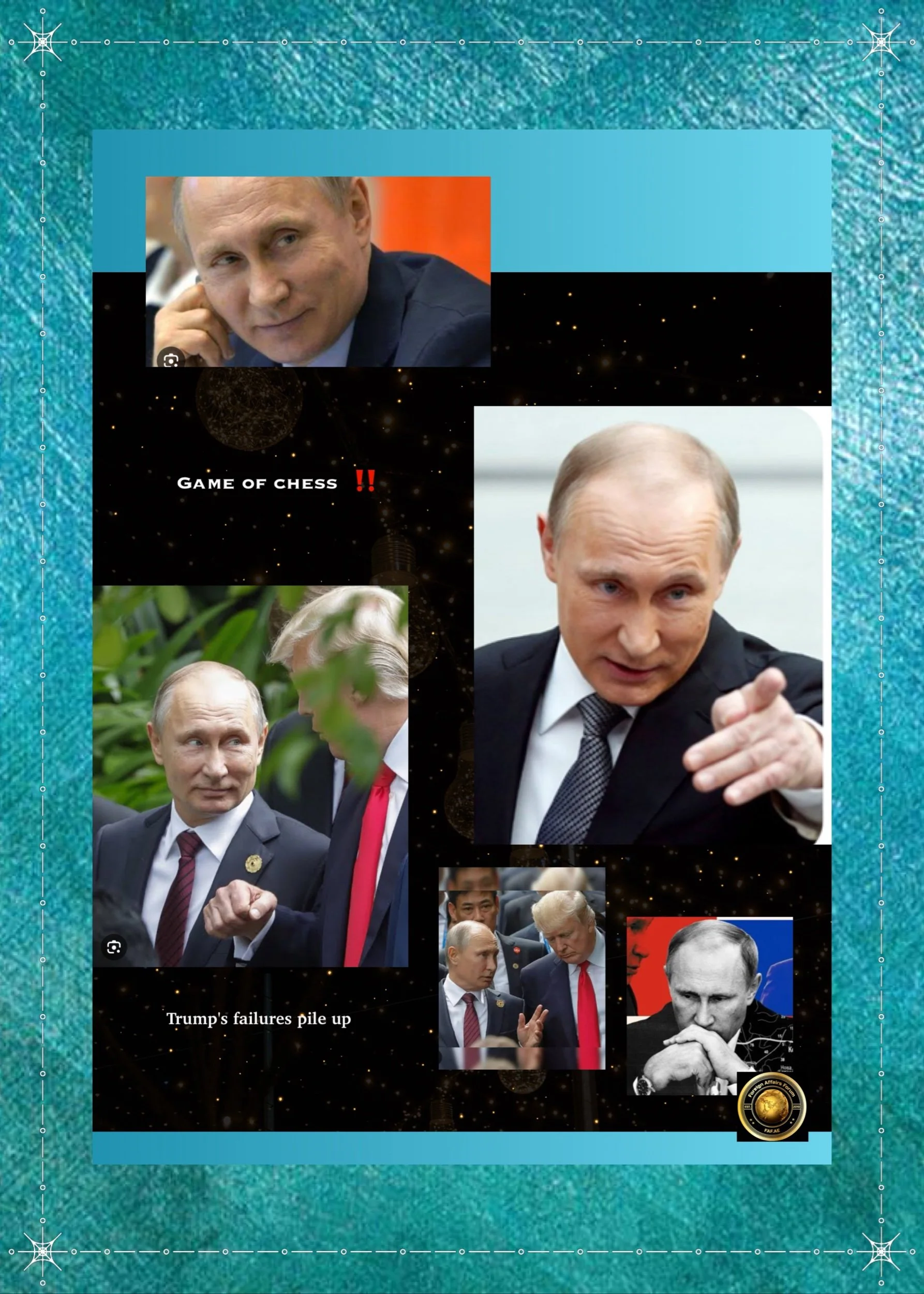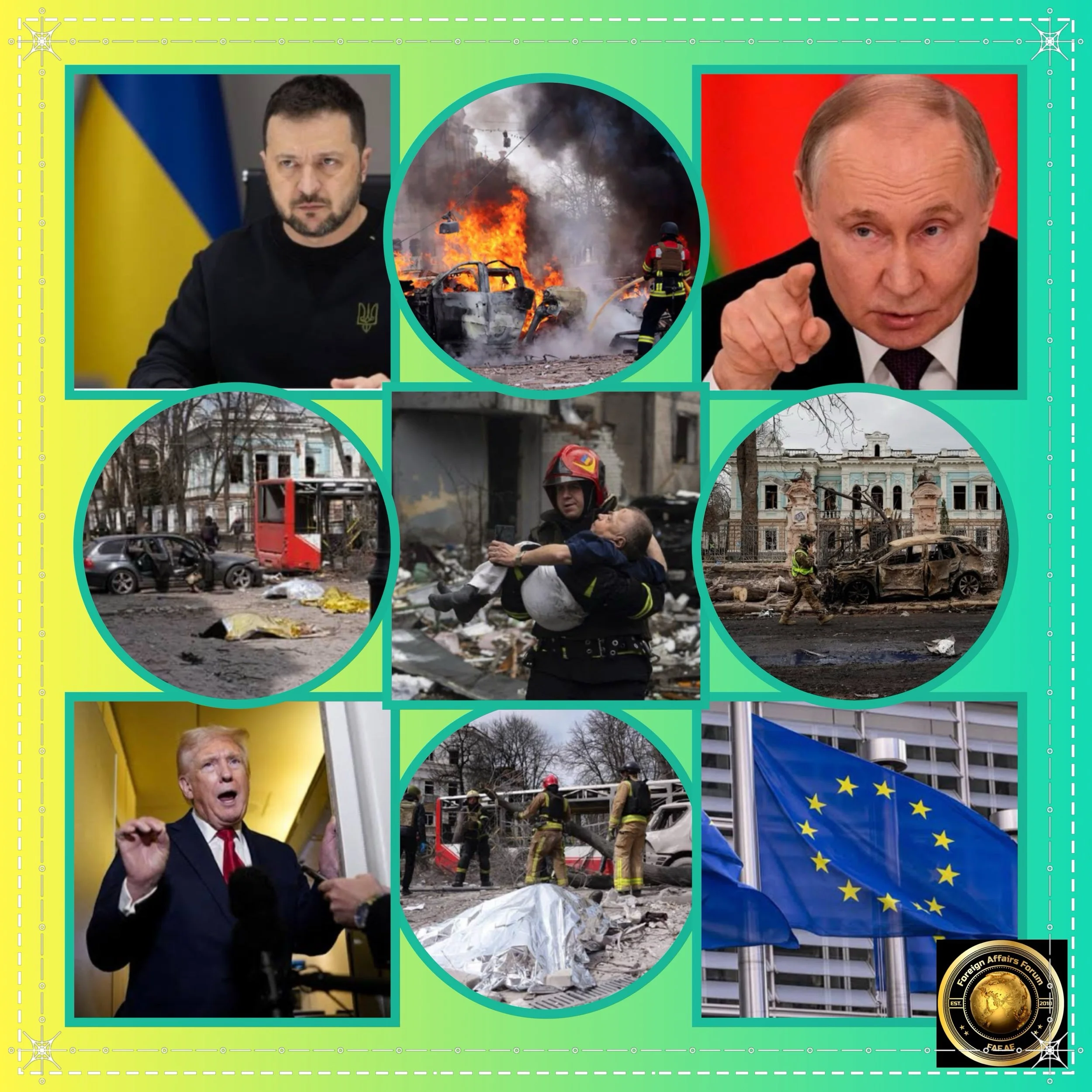Trump’s Diplomatic Gambits, NATO’s Strategic Dilemmas, and the EU’s Hesitant Role in the Ukraine War
Introduction
The Trump administration’s approach to the Ukraine conflict has drawn intense scrutiny as casualties mount and diplomatic efforts falter.
With over 150,000 Russian troops poised to reinforce frontlines in 2025 and NATO allies pledging €20 billion in military aid, the war’s trajectory hinges on competing strategies.
Trump’s transactional diplomacy, European hesitancy to deploy forces, and Russia’s relentless military calculus.
FAF analysis examines the contradictions in U.S. policy, NATO’s evolving role, and the systemic barriers to EU military intervention.
Trump’s “Double-Edged Diplomacy”: Balancing Putin and NATO
Riyadh Talks as Political Theater
The U.S.-Russia negotiations hosted by Saudi Arabia in February 2025 exemplified Trump’s preference for symbolic over substantive diplomacy.
While Crown Prince Mohammed bin Salman leveraged the talks to burnish Saudi Arabia’s image as a mediator, the exclusion of Ukraine and EU representatives rendered the discussions ineffective.
Russian Foreign Minister Sergey Lavrov exploited the platform to demand recognition of annexed Ukrainian territories, while U.S. Secretary of State Marco Rubio focused on restoring embassy staff and economic ties.
These priorities diverged sharply from Kyiv’s insistence on territorial integrity, leading Ukrainian President Zelenskyy to dismiss the talks as “performative appeasement.”
Internal Divisions Over Concessions to Russia
Trump’s special envoy, Steve Witkoff, has emerged as a polarizing figure, advocating for ceding Donetsk, Luhansk, Zaporizhzhia, and Kherson to Russia—a stance mirroring Kremlin demands.
This position clashes with General Keith Kellogg’s insistence on maintaining military support for Ukraine, exposing a rift within the administration.
Witkoff’s March 2025 meeting with Putin and Trump’s refusal to commit to NATO troop levels in Poland have fueled perceptions of U.S. ambivalence.
As Republican lawmakers warn against “rewarding aggression,” the lack of coherent strategy risks emboldening Russian advances.
The NATO “Bait-and-Switch”
Trump’s public assurances of NATO solidarity—echoed by Secretary Rubio’s claim that “the U.S. is as active in NATO as ever”—contrast with behind-the-scenes pressure to reduce commitments.
The April 2025 withdrawal of U.S. forces from Jasionka, Poland, despite General Christopher Cavoli’s objections, signals a selective retrenchment.
By conditioning support on European burden-sharing (“NATO’s vitality rests on every ally doing their fair share”), Trump leverages the alliance as a bargaining chip.
This duality allows him to claim NATO strengthening while redirecting resources toward Indo-Pacific priorities, leaving European allies questioning U.S. reliability.
EU’s Paralysis: Between Defense Budgets and Deployment Realities
The €20 Billion Pledge and Its Limitations
NATO’s €20 billion military aid package for Ukraine in Q1 2025, including German IRIS-T systems and British drones, underscores Europe’s material commitment.
However, these contributions prioritize long-term capacity building over immediate battlefield needs.
For instance, Lithuania’s €30 million pledge focuses on drone production facilities rather than artillery shells.
Such investments, while strategically sound, fail to address Ukraine’s urgent shortages: its forces fire 5,000 shells daily against Russia’s 15,000.
The “Reassurance Force” Quandary
France and the UK’s proposed European-led “reassurance force” aims to deter post-ceasefire Russian aggression but faces structural barriers.
The force’s mandate—potentially involving air defense zones and port security—remains undefined, with Sweden and others demanding clarity on rules of engagement.
EU Foreign Policy Chief Kaja Kallas acknowledged the paradox: “We cannot keep the peace if there is no peace to keep.”
Without U.S. participation, the force risks becoming a symbolic gesture, as 70% of NATO’s airpower and intelligence assets remain American-dependent.
Political Hesitancy and Escalation Fears
EU leaders privately cite three reasons for delaying troop deployments:
Legal Constraints
NATO’s Article 5 does not apply to non-member Ukraine, limiting collective defense obligations.
Domestic Politics
German Chancellor Olaf Scholz faces voter resistance to combat missions, with 62% opposing direct involvement in April 2025 polls.
Russian Retaliation
Fears of strikes on NATO supply lines, as seen in the April 2025 bombing of a Romanian-bound aid convoy near Odesa, deter proactive measures.
NATO’s Precarious Balancing Act
The Ramstein Summit’s Mixed Signals
The April 2025 Ramstein meeting highlighted NATO’s fragmented approach. While the U.K. pledged £4.5 billion—its most significant annual commitment—and Germany earmarked €11 billion through 2029, the absence of U.S. Defense Secretary Pete Hegseth marked a symbolic downgrade.
The summit’s focus on “long-term security guarantees” clashed with Ukraine’s immediate need for 150 F-16s and 500,000 artillery shells, revealing a disconnect between pledges and priorities.
Air Defense and the Escalation Dilemma
NATO’s decision to deploy IRIS-T and Patriot systems in western Ukraine announced on April 11, 2025, aims to protect critical infrastructure but does not provide frontline coverage.
This mirrors the U.S.’s 2024 “sanctuary policy,” which restricted Ukrainian strikes beyond 80 km into Russia.
By avoiding confrontation, NATO seeks to balance deterrence with escalation management—a strategy Putin has exploited to consolidate gains in Donbas.
The Membership Stalemate
Despite Secretary-General Mark Rutte’s assertion that “Ukraine’s future lies in NATO,” internal divisions persist.
Hungary and Slovakia oppose fast-tracking membership, fearing entanglement in an unresolved conflict.
The U.S. proposes a “stabilization and integration action plan” involving NATO trainers in Ukraine, but France resists embedding troops beyond advisory roles.
This half-measure leaves Ukraine in a gray zone—armed but not assured of collective defense.
Conclusion
The High Cost of Strategic Ambiguity
Trump’s dual-track diplomacy—courting Putin while pressuring NATO—has yielded tactical gains (e.g., Saudi-mediated prisoner swaps) but strategic stagnation.
With 12.9 million Ukrainians displaced and Russian forces advancing 0.5 km/day in Donetsk, the EU’s €20 billion aid package risks becoming a footnote to a protracted attritional war.
Immediate Imperatives
EU Troop Deployment
France and the UK must operationalize their “reassurance force” in Odesa and Lviv by June 2025, backed by a UNSC resolution under the “Uniting for Peace” mechanism.
Lift Strike Restrictions
Allow Ukrainian use of NATO-supplied missiles against Russian logistics hubs in Belgorod and Rostov.
Conditional Sanctions Relief
Offer Russia partial SWIFT access in exchange for withdrawing from Zaporizhzhia and Kherson.
Long-Term Reckoning
NATO Reform: Adopt a two-tier membership granting Ukraine Article 5 protections west of the Dnipro River.
Resource Reallocation
Redirect 15% of frozen Russian assets (€30 billion) to fund EU defense industries.
The alternative—a frozen conflict cementing Russian control over 18% of Ukraine—would embolden Putin to target Moldova and the Baltics. As Trump hedges and Europe hesitates, the war’s outcome rests on whether NATO can transcend its crisis of will.






